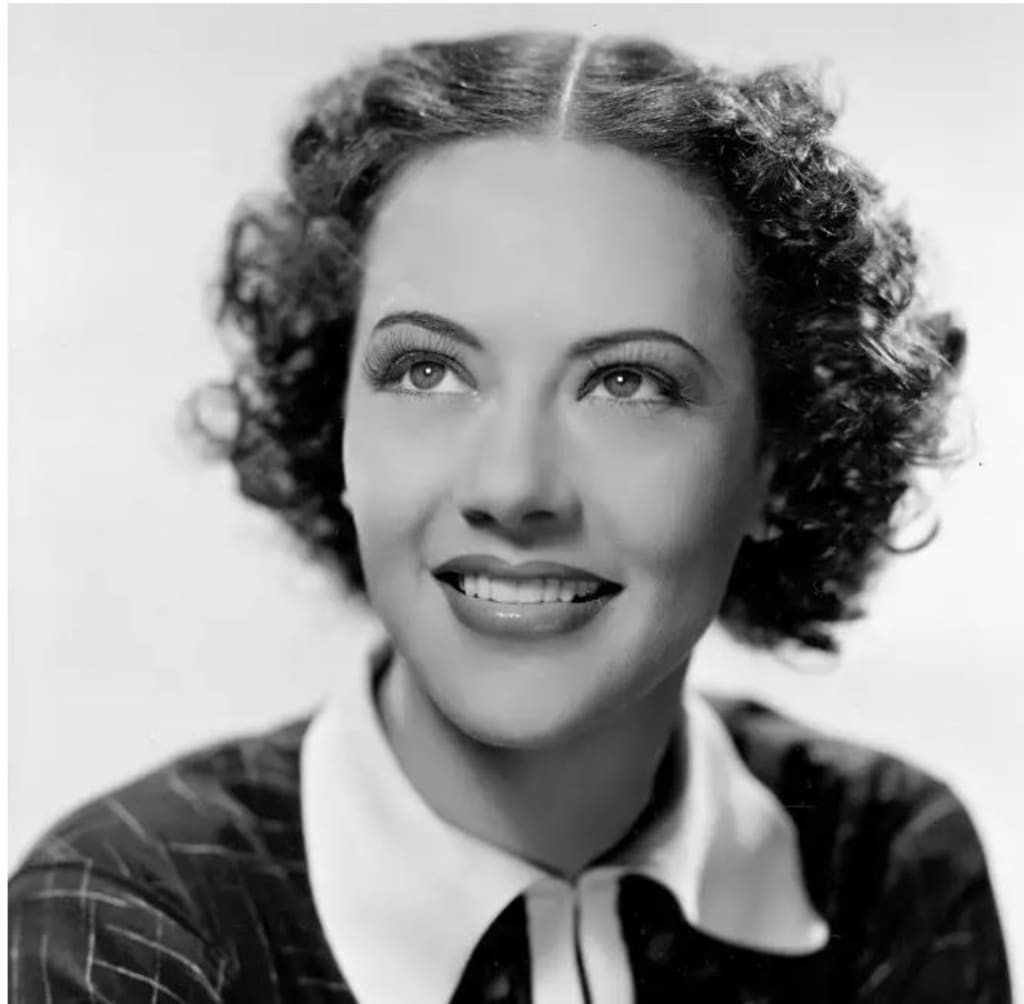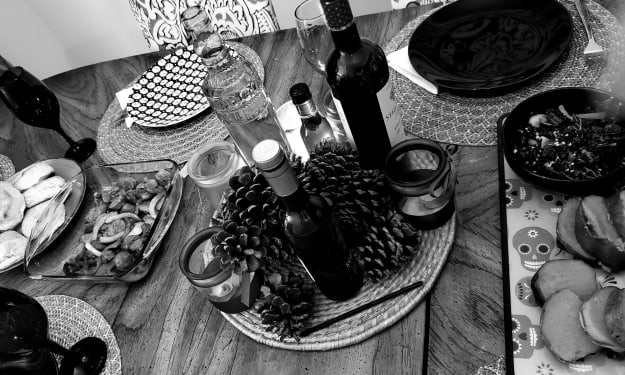
The towering, old birch trees still line route 29 - the once main route in and out of Columbia, Maryland, one of America’s first planned cities. The route now ends eerily, yet neatly into flames of rose bushes that line the holographic solar shield that keeps all in and everything else out. Now called New Columbia, a namesake for the “once-heralded Christopher Columbus” is the only standing city after the final race war that obliterated the vast urban, environmental, rural and ethnographic landscape of a formerly powerful United States. This is the final Columbia of the former American “democratic” experiment. Like early Jamestown, it is a singular enclave, an unforeseen futuristic descendant. Unlike Jamestown, it is a place where access is due not to racial purity, but rather mixedness.
Long before the official race wars obliterated America, Columbia was begun as the brainchild of visionary businessman James Rouse nearly two centuries earlier in the 1960s. Pastoral lands bought outside The Old Line State's largest city, Baltimore, were secretly bought by Rouse’s shell companies. Until then Maryland had seen four centuries rife with overt practices and legacies of violent colonial oppression and enslavement. Over the four hundred years of occupation, the indigenous people of the Chesapeake watershed had lost their populations, economies and territories. The Africans and their creolized descendants were forced to replace their labor and had no control of any aspects of their lives, taking centuries to get even the most basic rights. Once the Civil War ended slavery, Maryland like other states enacted a culture that codified laws to maintain an economic and racial caste system.
James Rouse was a byproduct of this society as a Maryland-born man. His birthplace, Easton, was the county seat of the once great orator, leader, self-emancipator, Frederick Douglass. Rouse was born 50 years after the Civil War. He witnessed all the ironies of Maryland’s unique positioning between the former American capital of Washington, DC, and the Chesapeake Bay, and the industrial, commercial north and the rural stolid south. Maryland bore all the secrets of the lash and the caste system with some unique in-betweens. Rouse’s life felt the rumblings of racism as an empathetic observer.
But, Black people of all hues experienced it and lived it. Those whites with keen and compassionate enough eyes bore witness to it. So when Rouse began anonymously buying up rural lands between Baltimore and Washington, DC via shell companies, no one knew what would be in store. But, Rouse was very intentional in the endeavor. He assembled a dream team to create a uniquely planned community with the small-town Easton feel, but with an integrated approach. During those planning years, Rouse recruited what would be called the Working Group, an interdisciplinary team of sociologists, academics, planners, environmentalists and more to plan 9 villages. Environmentally-friendly, educational, cultural and social spaces were to drive home the potential for self-actualization. The 9 villages were to be centered around two main lakes carved from formally pastoral lands, once plantations of the 19th century. Integrated housing would be a unique tenet balking at the land covenants throughout Maryland that forbade certain ethnicities of people from living or purchasing.
Interracial couples and children would find a particular haven in Rouse’s vision. When interracial marriage became legalized federally by the Supreme Court’s strike against southern miscegenation laws, Columbia held its first interracial ceremony just months after. Interracial couples followed suit moving from far away to live in the experiment. Columbia grew, prospered and became more diverse over the next fifty years. It rose repeatedly to top-ten-best-places-to -live lists of American cities year after year with a median income above 100,000 by the early 2000s. Columbia seemed to be the planned American dream.
That was before the rise of the race wars. The race wars began bubbling up when the then 45th President of the United States came to power. Maryland wounds were breaking further open with redistricting and the death of Freddie Gray in Baltimore, Maryland, just 20 miles north. But, it didn’t stop when 45 exited disgracefully. The tinderbox was set, and each American election local, state or national bore the marks of the 400 hundred year caste system. The race wars erupted across the wide continent and up and down its coasts. It became so viciously nuclear that the American experiment was pummeled down from the haughty breadbasket of the world to eviscerated fields, algae-ridden rivers, and pock-marked mountains. Its cosmopolitan cities were abandoned with only a single known mixed-race colony to withstand the destruction, New Columbia.
Columbia, Rouse’s two-hundred old experiment was now New Columbia. The Working Group had begun preparing for New Columbia when the first rumblings of the race war were uttered in the 2020s. The descendants of the original Working Group preemptively planned just as Rouse had secretly bought up land, the Working Group secretly began breeding an ideal futuristic version of Columbia and continued to plan it for decades passing on secrets and planning to heirs. The original and subsequent interdisciplinary group was diverse in field and experience, but was never diverse racially; it was entirely composed of all-white “liberal” well-to-do men. It was decided the Working Group would always maintain control. It was an inheritance only achievable by blood. The Working Group decided that the future of Columbia would neither be Black nor white. It would be mixed race. But ironically, the Working Group would continue as the colony’s leadership.
They believed mixedness was progression and only that could prevent further catastrophes. The Working Group also determined that Black blood would be hard to dilute, so there would be rewards for the highest of yellow-skinned mulattos (a general term for those of mixed African and European descent, generally regarded as 50 percent each). But, there were never efforts to dilute whiteness. For the Working Group, the quadroons (one-quarter Black) and better yet octoroons (one-eighth Black) of slavery would be the ideal of the future. And just as the old Black folks said during slavery “if you white you right, if you Black jump back” there was a clear direction that the “mixedness” was supposed to point. “Light and bright and damn near white” was the only compass for New Columbia.
Within the Working Group’s mold, people of indigenous, Asian and Latinx descent were excluded from the mix and therefore the colony. The working group did not want to chance what they did not understand. They were anti-LatinX because they did not trust hidden Black and indigenous blood from what they saw as already failed mixed-race Latin American societies. The Working Group was Anti-Asian because they felt the healing was essentially a Black and white divide, plus there were always latent fears that people of Asian descent would usurp the progress and idea. Lastly, the Working Group was anti-indigenous because it saw the indigenous population as prehistoric, so they were not hand-picked for the colony’s breeding. The Working Group and the colony would remain a nouveau American colonial endeavor.
The subsequent mulattos, quadroons and octoroons of New Columbia never knew their beginnings. First interracial families were selected for their eggs and sperms to create the first generations of families before the race wars were complete. Subsequent generations were formed from hand picked individuals who showed some allegiance during the subsequent race wars both white and Black. But, there were criteria. Each had to pass a sort of mental identity test. Whites had to be liberal and believe that mixing would eradicate racial issues over time. Blacks had to believe in colorist values that preferred lightness over darkness, looser grades of hair over tighter grades of hair, and sky-colored eyes versus eyes deep as rich soil.
Just as the original Columbia had flourished for a while, so did the second Columbian experiment. The green spaces, the restaurants, the shopping promenades all of the features that kept the original Columbia a bustling hub remained. The products had changed. The numerous diverse food options dwindled to a much less soulful soul food; the music less polyrhythmic; the English exact with little to no evidence of creolization.
Women were required to straighten their hair, so chemical products abounded in the shopping centers. There were free blowouts included in monthly allowances named colony maintenance. Monthly allowances included cash for color contacts in blue, grey or green. Digital ads ran from glossy billboards with unique shades of beige and cafe au lait hues. Women showed modesty in dress, no colorful clothes, headwraps or fitted clothes were allowed, only studs in earlobes, no hoops or earlobe-defying earrings. Necklaces and chains for men and women were forbidden. Jewelry could not adorn any other part of the body, especially the mouth. While the majority of rules regulated women’s bodies, men were not to wear loose jeans, nor overly fitted jeans. They were to have a straightforward gait and close-cut hairstyles that did not reveal the array of curl patterns that Africa could gift.
While breaking any rule could result in extreme punishment or even worse banishment, the most severe punishment was for those who had any images, especially pictures of ancestors. Ancestral acknowledgement was explicitly forbidden. Only the colony’s first interracial families were known by image.
Thirty-something Clotel knew the rules. She had lived by them unquestionably until she didn’t. She was considered more mulatto than quadroon or octoroon, so her housing was not as grand as the other two castes. But, it was nice enough, a one-bedroom apartment with the latest fixtures and a view to the back of luxury townhomes occupied by the quadroons and large single family homes occupied by the octoroons and the two dozen Victorian mansions occupied by the all-white Working Group. No one within the castes had ever seen images of the diverse ethnicities of people that existed before the race wars: photo albums were burned and social media accounts had been wiped clean by phenotype-detecting algorithms. But, Clotel had finally made the decision to risk it all. There were whispers from the darker, older mulattos - those that received the smallest of apartments yet the greatest allotments to alter their bodies. The darkest mulattos were the oldest and had faint memories of images beyond the first families. They had seen their family members within communities of African descent. But, they had bought into the socialization that lighter meant better and were handpicked for New Columbia at a time early enough for darker mulattos to enter.
Clotel had hung particularly close to one-hundred-year-old Oyela. She had been born in 2053 when the race wars had not been complete. She was a light cinnamon brown, a remaining shade of yesteryear in a sea of heralded creams and beiges. During the race wars, Oyela had bought into the ethos that her light cinnamon complexion and her hair graded 3A, a number associated with the looseness of her curls and a demonstration that her African blood had less of a hold on her made her special. She bought into it until the second generation in the colony was born and she was moved from the townhouses to the basement flat of her building. Her allotment and Working Group renewal letter in those early years continued to recommend changes that she could implement to fit better.
Oyela became quietly defiant over the years. She was secretly proud that the only image most likely remaining in all of New Columbia, was the heart-shaped locket her Bahamian grandmother begged her to keep as the world changed. Oyela deeply loved the grandmother who raised her, so she did. She kept the image hidden in the locket through the wars- her immigrant-Bahamian grandmother, her 4C hair cropped short, her cheekbones proud enclosed in skin the deepest reddish-brown, her smile toothy but in protection of the little mulatto granddaughter in her embrace, a light cinnamon burning the sage of Africa in a New Columbia.
“Here,” she said to Clotel and a new revolution was en route to begin.
About the Creator
Nichelle Calhoun
A daughter/granddaughter of the Great Migration telling Black stories from here, there, then and now.






Comments
There are no comments for this story
Be the first to respond and start the conversation.